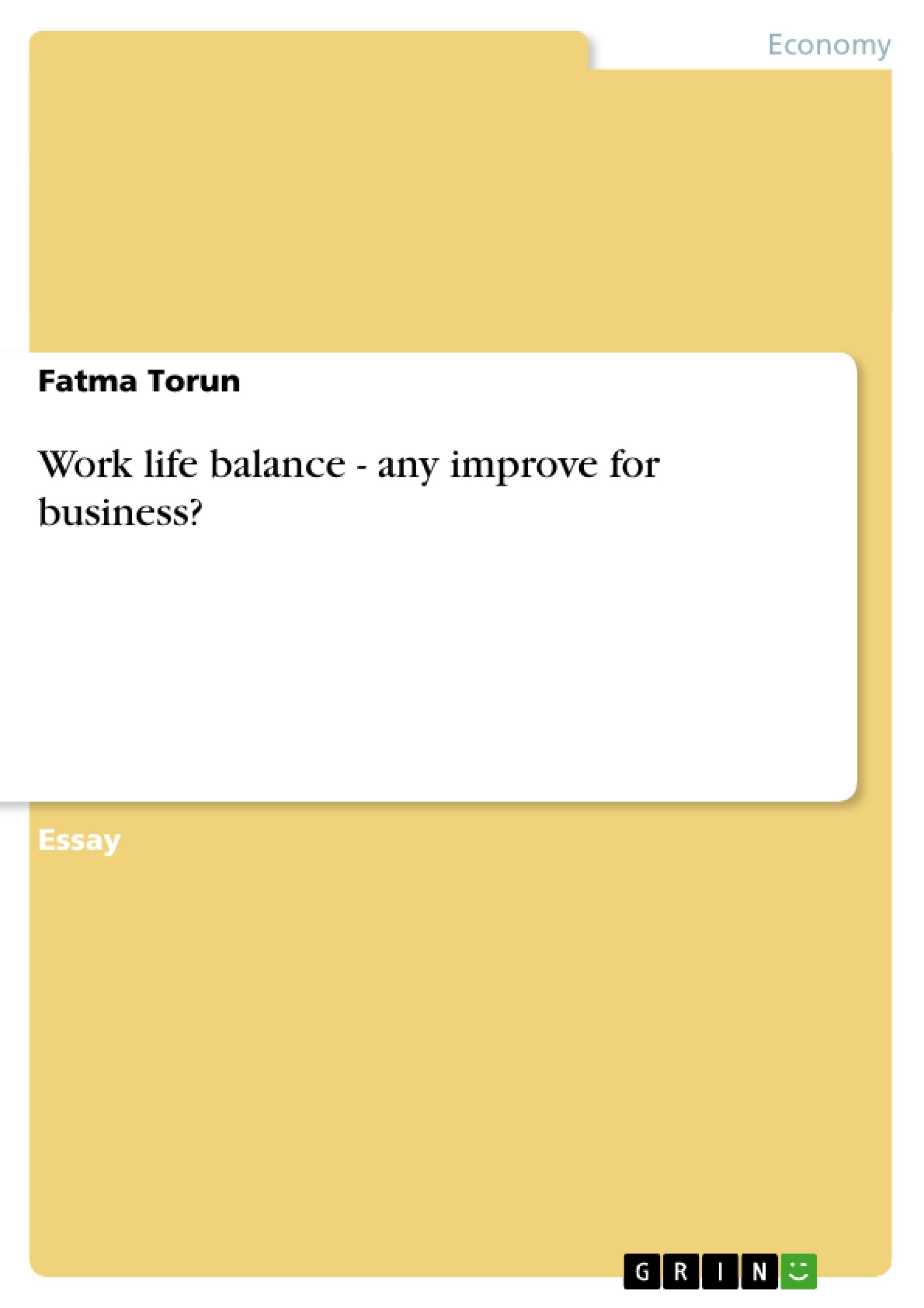The role of work and the workplace have changed throughout the world due to economic conditions and social demands. Global competition, renewed interest in personal lives and family values and an ageing workforce are factors which contribute to the serious consideration of equilibrium between work and life (Lockwood, 2003). The challenge of work-life balance is rising to the top of many employees’ and employers’ consciousness. Employees are placing more value on quality of working life and seeking for greater flexibility so that they can manage work commitments along personal life. Employers, on the contrary, need in today’s economic climate a workforce that is stable and committed but also more adaptable and flexible to meet business challenges. Finding the right balance between work responsibilities and the demands on personal lives is conclusively becoming a significant issue (Loghran, 2002). Therefore, at the core of human resource strategy lays the need to consider work-life balance for employees. One of the vehicles to help provide attainment of personal and professional goals are work-life programmes.
But why should organisations follow this work-life trend? Is it a critical business issue or simply the “right thing to do”? Which potential business improvement does work-life programmes offer to organisations? The aim of this report is to analyse the benefits for employers when implementing work-life balance programmes. Therefore, the concept of work-life balance will be defined and the potential business benefits will be analysed. Based on this analysis, this report will show that organisations can gain a competitive advantage when offering work-life initiatives.
Inhaltsverzeichnis (Table of Contents)
- Introduction and Objectives
- Definition and Description of Work-life Balance
- Historic Context
- Work-life Balance – Any Improvement for Business?
- Benefits of Work-Life Balance
- Best Practices of Work-Life Balance
- Challenges of Work-Life Balance
- Summary and Conclusion
Zielsetzung und Themenschwerpunkte (Objectives and Key Themes)
This report aims to analyze the benefits for employers when implementing work-life balance programs. It defines the concept of work-life balance, explores its potential business benefits, and argues that organizations can gain a competitive advantage by offering work-life initiatives.
- The increasing importance of work-life balance in today's competitive business environment
- The impact of work-life balance on employee morale, productivity, and retention
- The benefits of work-life balance programs for businesses
- The various types of flexible work arrangements that can improve work-life balance
- The challenges of implementing work-life balance programs
Zusammenfassung der Kapitel (Chapter Summaries)
- Introduction and Objectives: This chapter sets the context for the report by highlighting the changing role of work and the workplace, driven by global competition, social demands, and an aging workforce. It emphasizes the growing importance of work-life balance for both employees and employers. The report's objective is to analyze the business benefits of implementing work-life balance programs.
- Definition and Description of Work-life Balance: This chapter defines work-life balance as the successful balance between work obligations and personal commitments. It explores the benefits of employees having control over their work and working time, leading to reduced stress, increased satisfaction, and loyalty. It also acknowledges the difficulties in balancing work with other responsibilities and commitments, highlighting the importance of informed decision-making.
- Historic Context: This chapter traces the origins of the work-life balance concept to North American human resource management, with the term coined in 1986. It highlights the evolution of work-life balance programs from early initiatives like flexible work schedules to the more comprehensive programs of today, recognizing the shifting economic landscape and the increasing focus on human capital.
- Work-life Balance – Any Improvement for Business?: This chapter delves into the strategic role work-life balance can play in improving business competitiveness. It underscores the need for flexible working arrangements that enhance business performance rather than hindering it. Several examples of flexible work arrangements, such as teleworking, compressed work weeks, and job sharing, are presented.
Schlüsselwörter (Keywords)
This report focuses on work-life balance, flexible work arrangements, employee morale, productivity, retention, business competitiveness, and the benefits of implementing work-life balance programs for organizations. It highlights the importance of recognizing the needs of a diverse workforce, fostering a positive work environment, and leveraging human capital for competitive advantage.
- Citation du texte
- Fatma Torun (Auteur), 2004, Work life balance - any improve for business?, Munich, GRIN Verlag, https://www.grin.com/document/32160



